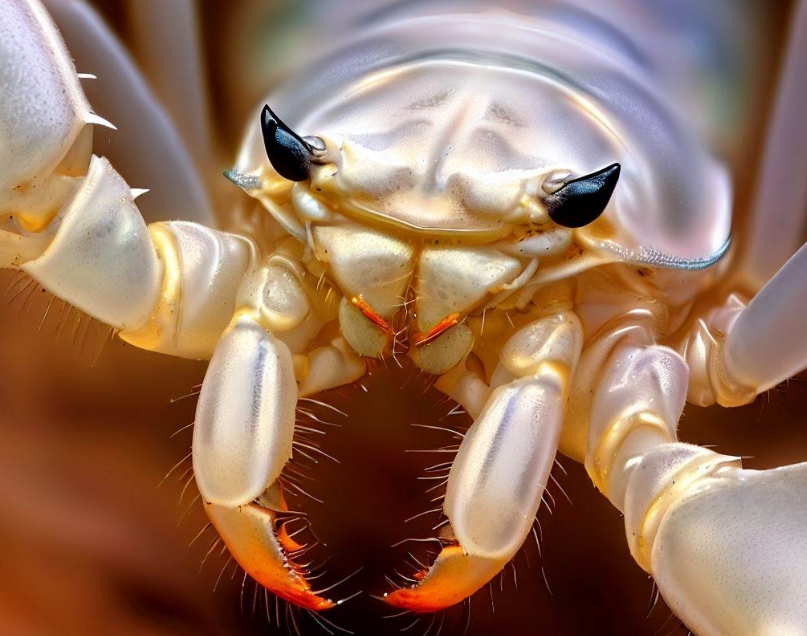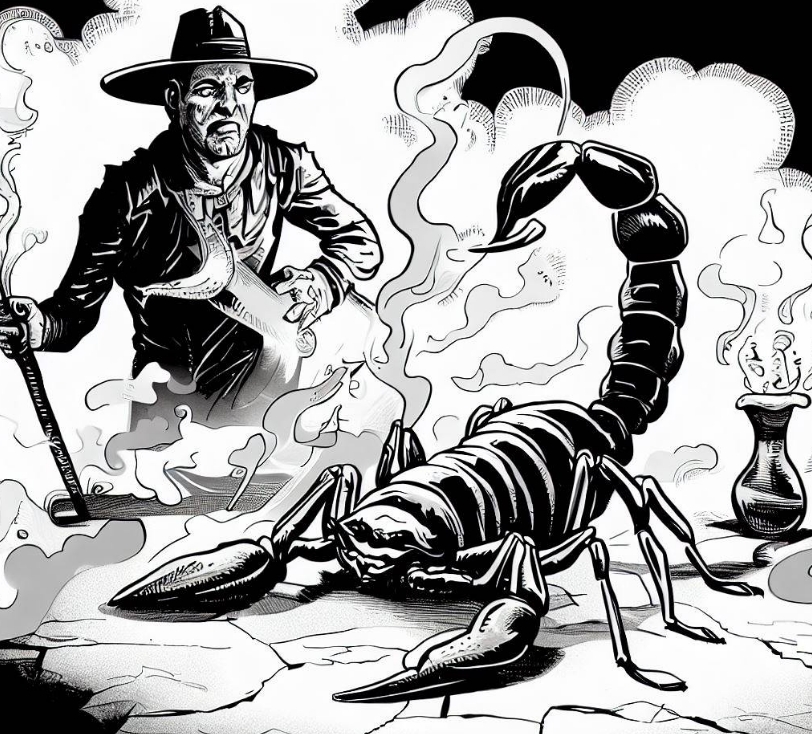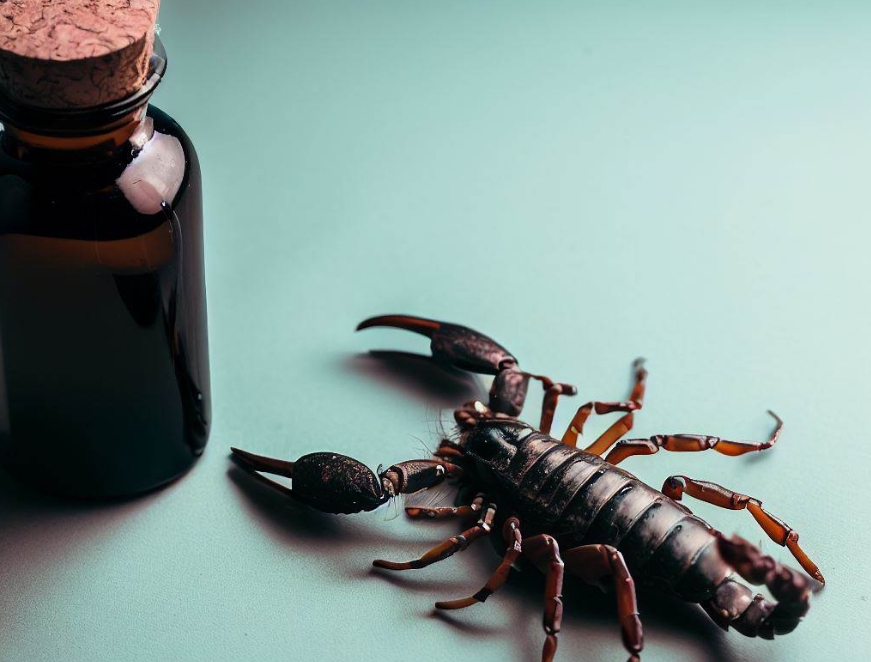Welcome to the incredible world of white scorpions! These little arachnids are as fascinating as they are elusive, and in this comprehensive guide, we’ll delve deep into everything there is to know about them. From their intriguing biology to their unique adaptations, we’ve got you covered. So, let’s dive right in!
The Mysterious White Scorpion: What is it?
Contents
At first glance, you might think that the white scorpion is an insect, but it’s actually part of the arachnid family, closely related to spiders, mites, and ticks. While they may resemble insects, scorpions have a few key differences that set them apart, such as having eight legs and two main body segments.
The white scorpion is a rare and intriguing creature, often found in parts of Asia and Africa. Their pale, almost translucent appearance makes them stand out from other scorpion species, and they can even appear to glow under ultraviolet light, just like their black counterparts.
Interestingly, scorpions are related to lobsters, as both belong to the phylum Arthropoda. This explains their similar exoskeletons and jointed appendages.
The White Scorpion and its Diverse Cousins
While the white scorpion is a captivating creature, it’s important to note that they’re not the only intriguing species out there. In fact, there are over 1,500 known scorpion species, and some of them are just as fascinating as the elusive white scorpion.
- The Yellow-Tailed Scorpion is an intriguing species native to the UK. Their venomous sting is capable of delivering a painful, yet non-lethal, dose of venom to humans.
- The Asian Forest Scorpion is a large, black scorpion native to Southeast Asia. They’re known for their aggressive nature and can grow up to five inches in length.
- The Desert Scorpion is a resilient species that can survive in the harshest of environments, including the extreme heat and cold of the desert.
Remarkable Scorpion Adaptations
Scorpions are incredibly adaptable creatures, with a range of unique adaptations that allow them to thrive in various habitats. Some of these adaptations include:
- Exoskeleton: The scorpion’s tough, outer shell provides protection from predators and helps to prevent water loss in dry environments.
- Pincers: These powerful appendages are used to grasp prey and can even be used as a weapon against predators.
- Stinger: Located at the tip of the scorpion’s tail, the venomous stinger is used to immobilize prey and deter potential threats.
- Sensory hairs: Scorpions have tiny hairs all over their body, which allow them to detect vibrations and navigate their surroundings effectively.
The Clear Scorpion: A Myth or Reality?
You might have heard of the clear scorpion, another rare and mysterious creature that is often compared to the white scorpion. While some people believe that the clear scorpion is a separate species, it’s actually a misconception. In reality, the term “clear scorpion” usually refers to a recently molted white scorpion, whose exoskeleton hasn’t fully hardened and darkened yet. This temporary transparency makes them appear almost invisible, adding to their elusive reputation.
Scorpion Venom: A Dangerous Weapon and Potential Medicine
The venom of scorpions is a complex mixture of proteins, peptides, and other compounds. While some species possess venom that is potent enough to be life-threatening to humans, the majority of scorpions have venom that poses little to no risk. The venom of scorpions has been the subject of extensive research, as it holds potential for various medical applications, such as pain relief and even cancer treatment.
Caring for Your White Scorpion: A Step-by-Step Guide
If you’re a scorpion enthusiast and considering adding a white scorpion to your collection, it’s important to understand how to care for these delicate creatures properly. Below is a step-by-step guide to ensuring your white scorpion thrives in captivity:
- Housing: Provide a secure and well-ventilated enclosure with a tight-fitting lid to prevent escapes. The size of the enclosure should be at least three times the length of the scorpion.
- Substrate: Use a suitable substrate, such as coconut fiber or sand, to allow the scorpion to burrow and maintain the appropriate humidity levels.
- Temperature: Maintain a temperature gradient within the enclosure, with a warm side at 85-90°F (29-32°C) and a cooler side at 70-75°F (21-24°C).
- Humidity: Keep the humidity level between 50-70% to mimic their natural environment. Use a hygrometer to monitor humidity levels and mist the enclosure as needed.
- Hiding spots: Provide ample hiding spots, such as cork bark or rocks, to allow the scorpion to feel secure and sheltered.
- Feeding: Offer a variety of live prey, such as crickets or mealworms, every 7-10 days. Make sure the prey is appropriately sized and not too large for your scorpion.
- Handling: Limit handling of your white scorpion, as they can become stressed and may attempt to sting if they feel threatened.
Scorpion Pop Culture: The Influence of Scorpions on TV and Film
Scorpions have been a popular subject in various forms of media, from movies to television shows. One such example is the hit TV show, “Scorpion,” which aired for four seasons. The show followed a group of geniuses who tackled high-stakes situations and solved complex problems, often using their knowledge of scorpions and other arachnids as inspiration.
In Conclusion: The Allure of the White Scorpion
The white scorpion is a captivating creature that has captured the attention of scientists, hobbyists, and even the entertainment industry. Their unique appearance, remarkable adaptations, and elusive nature make them a fascinating subject for further study and appreciation. Whether you’re an arachnid enthusiast or simply intrigued by the world of scorpions, understanding the white scorpion’s biology, behavior, and care requirements can provide a newfound appreciation for these incredible creatures.
Frequently Asked Questions About White Scorpions
Q: Are white scorpions dangerous to humans?
A: While all scorpions possess venom, the majority of species, including the white scorpion, have venom that is not considered life-threatening to humans. However, a sting from a white scorpion can still be painful and cause localized swelling and redness. If you’re stung by a scorpion, it’s essential to monitor your symptoms and seek medical attention if you experience severe pain, difficulty breathing, or any signs of an allergic reaction.
Q: Can white scorpions be kept as pets?
A: Yes, white scorpions can be kept as pets by experienced and responsible arachnid enthusiasts. It’s crucial to understand the specific care requirements of white scorpions and provide them with a suitable environment, diet, and level of attention to ensure their health and wellbeing.
Q: What do white scorpions eat?
A: White scorpions are carnivorous predators that feed primarily on insects and other small arthropods. In captivity, they can be fed a variety of live prey, such as crickets, mealworms, and small roaches. It’s essential to provide appropriately sized prey items and ensure they are gut-loaded and dusted with a calcium supplement to support the scorpion’s health.
Q: How long do white scorpions live?
A: The lifespan of a white scorpion varies depending on the species, sex, and environmental conditions. On average, female scorpions tend to live longer than males, with lifespans ranging from 4-8 years. Males typically live for 2-6 years. In captivity, providing optimal care and conditions can help maximize their lifespan.
Q: How do I know if my white scorpion is a male or female?
A: Determining the sex of a white scorpion can be challenging, especially for inexperienced individuals. One method is to carefully observe the underside of the scorpion, paying close attention to the pectines – comb-like sensory organs located near the base of their legs. Males typically have longer and more well-defined pectines than females. However, this method is not foolproof, and consulting an expert or experienced hobbyist may be necessary for accurate identification.
Q: How do white scorpions reproduce?
A: White scorpions, like all scorpions, reproduce through a process called sexual reproduction. Males deposit a spermatophore on the ground, which the female then picks up with her genital opening. After a successful mating, the female scorpion will carry the fertilized eggs internally, eventually giving birth to live young called scorplings. The scorplings will ride on their mother’s back until they undergo their first molt, after which they will disperse and begin their independent lives.



